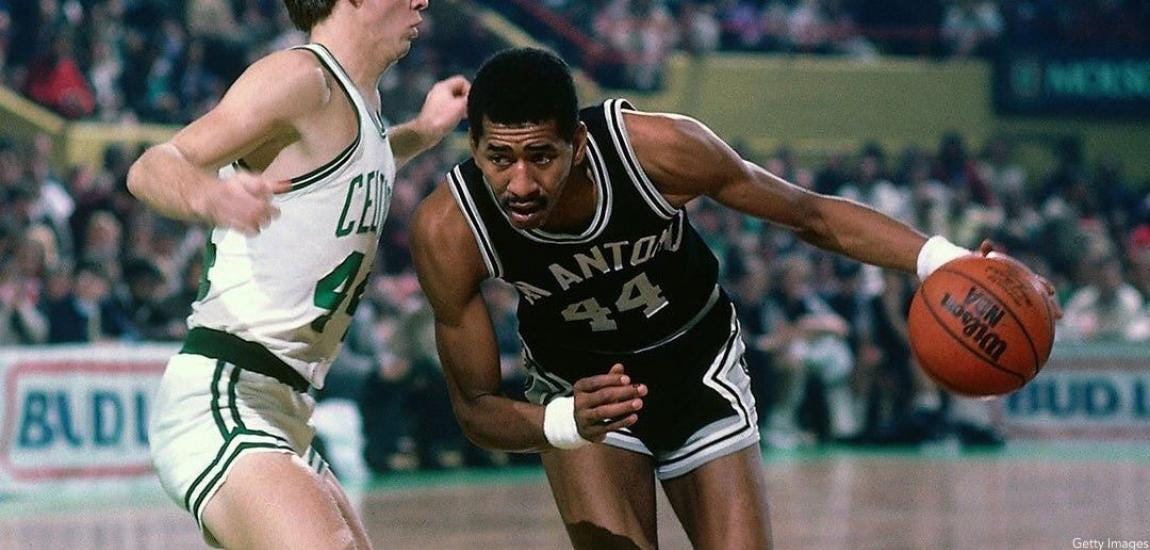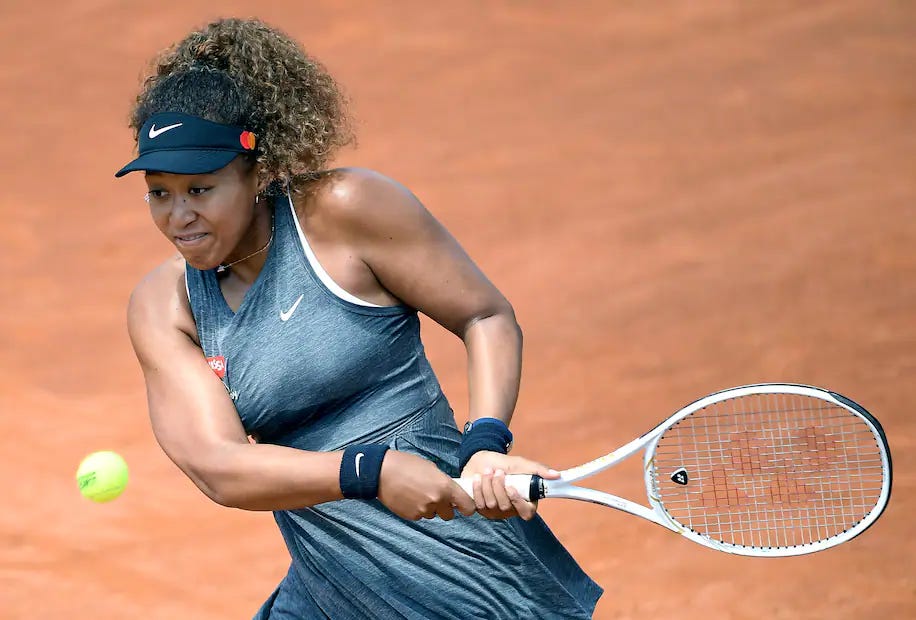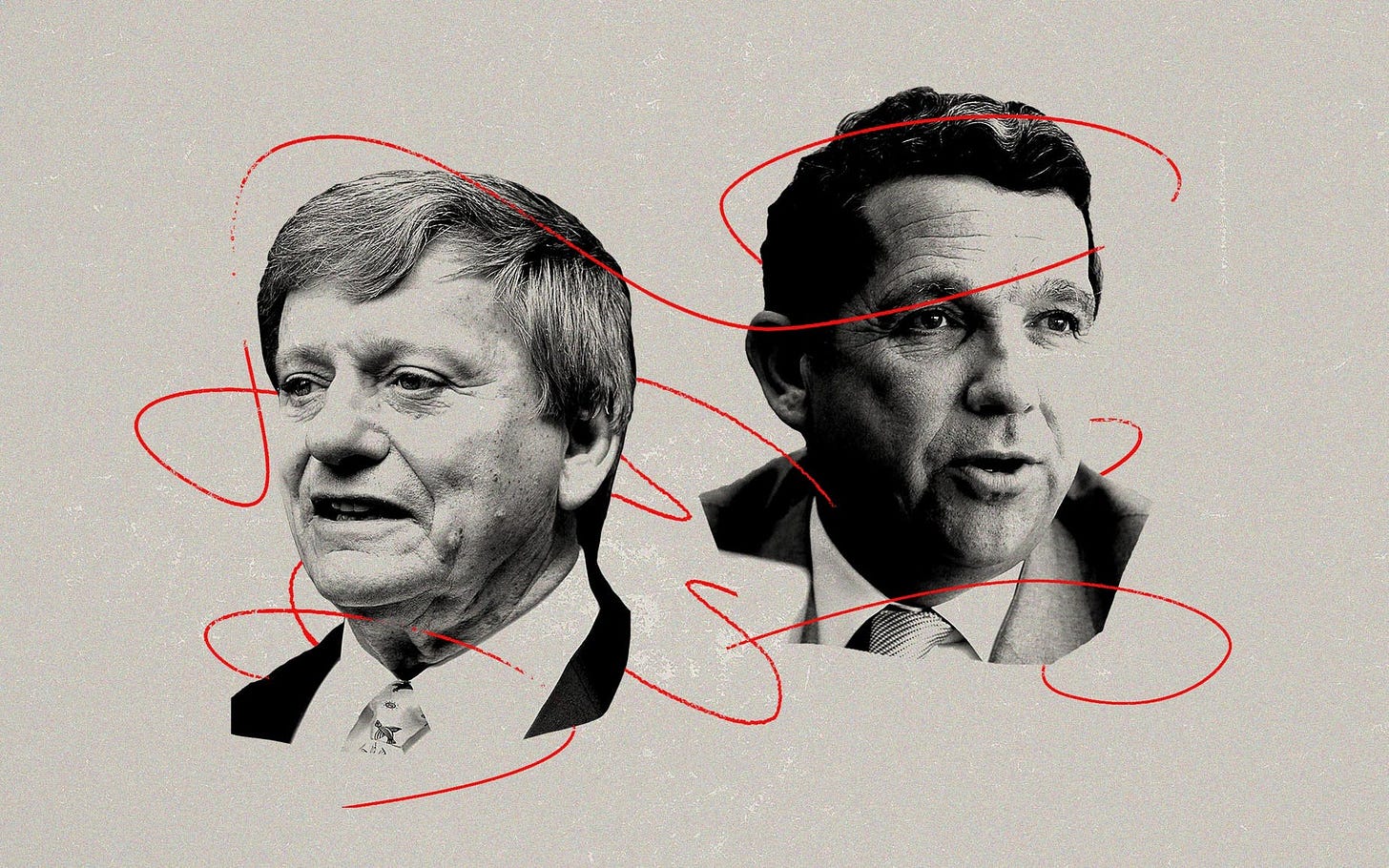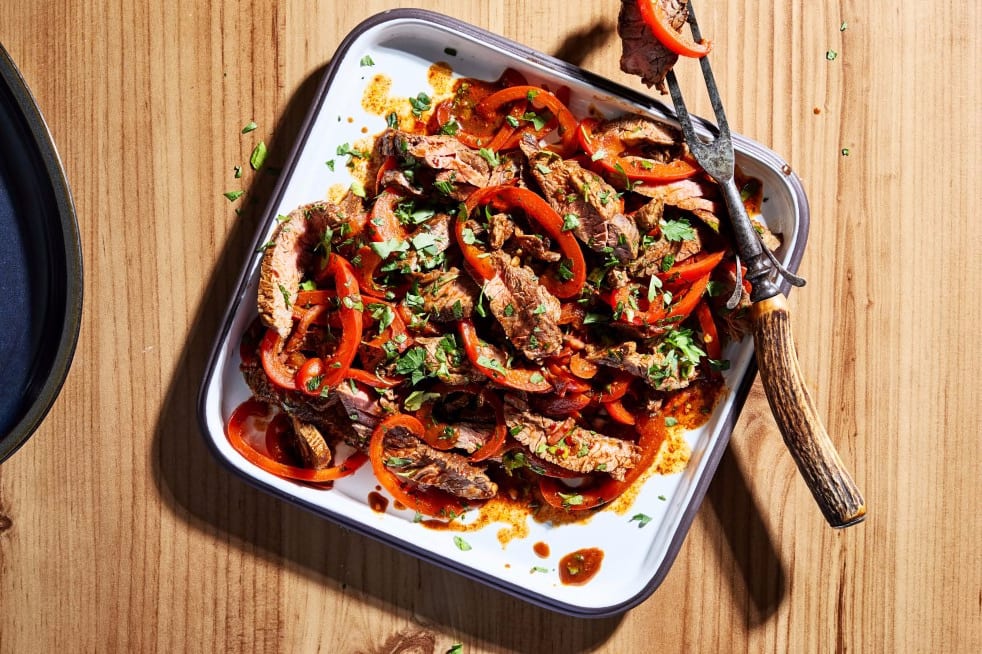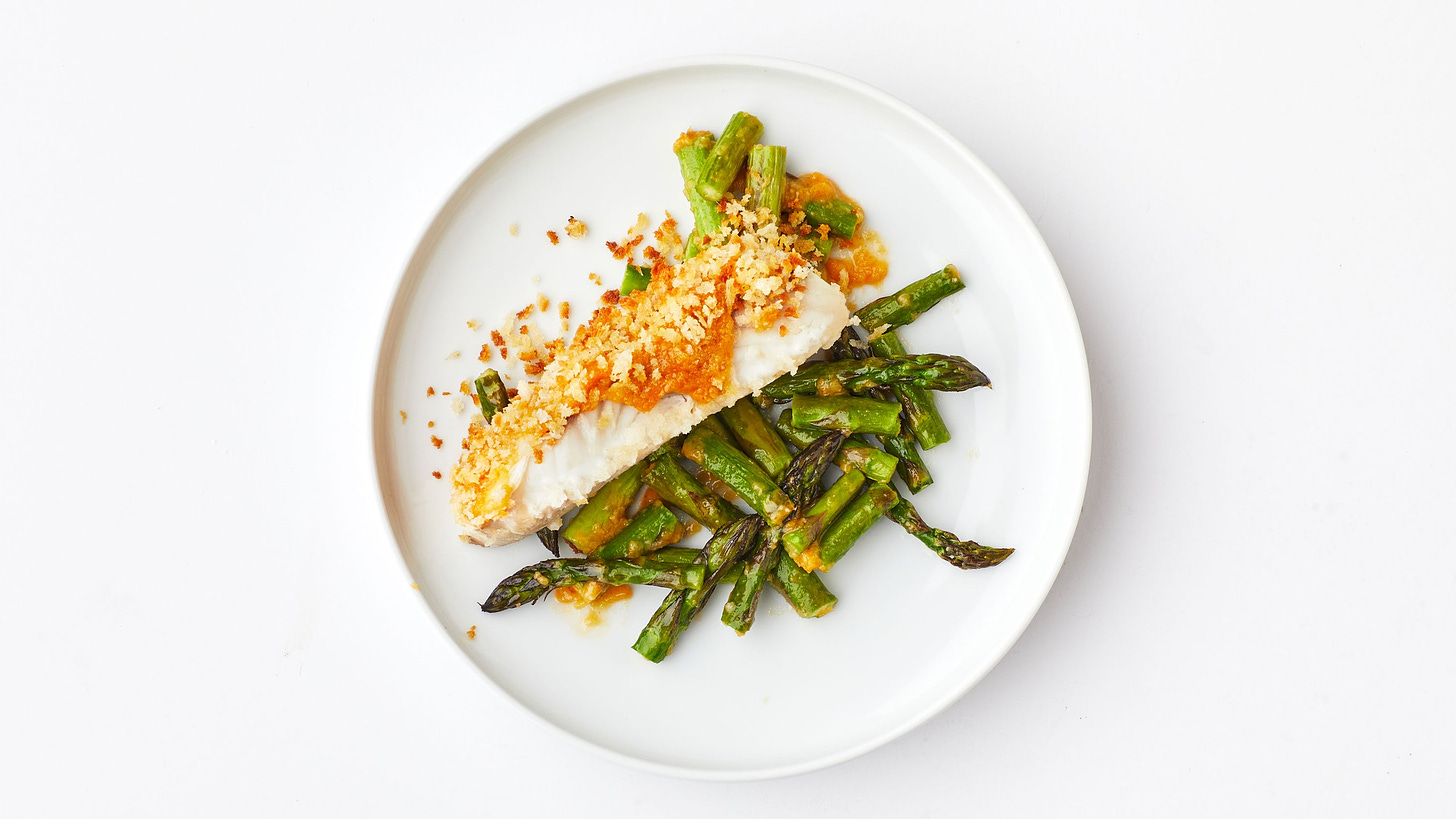Micah's Read of the Week, Vol. 44
Flamin' Hot Cheetos, Naomi Osaka and mental health, an $80M decision, recipe corner and more.
Hello, and welcome to Micah’s Read of the Week, Memorial Day Edition.
This is a newsletter filled with things Micah Wiener finds interesting.
Check out the introduction post here and the entire archive of previous newsletters here.
Please, subscribe and share with a friend.
The man who didn’t invent Flamin’ Hot Cheetos
By now, you may be familiar with the creation story of Flamin’ Hot Cheetos. It goes something like this:
For the last decade, Richard Montañez has been telling the story of how he invented Flamin’ Hot Cheetos. The world has been eating it up.
It goes like this: He was working as a janitor at Frito-Lay’s Rancho Cucamonga plant when he dreamed up a chile-covered Cheeto and believed in himself enough to call up the chief executive to pitch his spicy idea.
Montañez has built a lucrative second career out of telling and selling this story, appearing at events for Target, Walmart, Harvard and USC, among others, and commanding fees of $10,000 to $50,000 per appearance.
His second memoir, “Flamin’ Hot: The Incredible True Story of One Man’s Rise from Janitor to Top Executive,” is out in June from an imprint of Penguin Random House.
A biopic based on his life, to be directed by Eva Longoria and produced by Christian super-producer DeVon Franklin for Searchlight Pictures, is set to begin filming this summer. Both the book and the movie were sold after bidding wars — Montañez’s story is undeniably hot.
But…
There’s just one problem: Montañez didn’t invent Flamin’ Hot Cheetos, according to interviews with more than a dozen former Frito-Lay employees, the archival record and Frito-Lay itself.
This story from a couple of weeks back in the LA Times is outstanding.
First, the truth:
Flamin’ Hots were created by a team of hotshot snack food professionals starting in 1989, in the corporate offices of Frito-Lay’s headquarters in Plano, Texas. The new product was designed to compete with spicy snacks sold in the inner-city mini-marts of the Midwest. A junior employee with a freshly minted MBA named Lynne Greenfeld got the assignment to develop the brand — she came up with the Flamin’ Hot name and shepherded the line into existence.
Then the fiction:
But Montañez began taking public credit for inventing Flamin’ Hots in the late 2000s, nearly two decades after they were invented. First, he talked about it in speeches at local business and philanthropy award ceremonies. Then the online media, hungry for a feel-good story, took his claims viral.
The core of Montañez’s story rested on the pitch meeting that he says changed his life, where he sold his idea of Flamin’ Hot Cheetos directly to the Frito-Lay elite. In his new memoir, he lays out a dramatic scene, with more than 100 people, most of them “leading executives,” assembled alongside the CEO in a conference room at the Rancho Cucamonga complex to witness his presentation.
The Times spoke with 20 people who worked at the Frito-Lay divisions responsible for new product development 32 years ago, when Flamin’ Hot Cheetos were first extruded into existence. None recalls anything like the episode Montañez describes taking place.
“If that story existed, believe me, we would have heard about it,” said Ken Lukaska, who worked as a product manager for the core Cheetos brand when Flamin’ Hots were rolling out nationally. “This guy should run for office if he’s that good at fooling everyone.”
Gulp.
The research and reporting in this story are so good. The ultimate highlight is when the author clearly proves a former executive to be incorrect. And it’s a lot of fun to watch this guy squirm.
In an interview, Carey, 69, initially said that he first met Montañez after becoming division president for Frito-Lay West in December 1992, and that Montañez pitched him a set of products targeted at the Latino market. When asked how that timeline fits with the 1990 Flamin’ Hot trademark and test market, Carey insisted that Montañez is the creator of Flamin’ Hot Cheetos.
“The product that we know today as Flamin’ Hot Cheetos was definitely not out in the market” before his meeting with Montañez, Carey said. “That product was developed by those guys in the plant.”
When asked to explain the news clippings and former employee accounts that place Flamin’ Hot Cheetos in the market two years earlier, Carey hedged his statement. “This is such a long time ago, I bet there was a spicy Cheeto in the Chicago, L.A., maybe Houston market, too,” Carey said.
“Of all the people who are in PepsiCo or around PepsiCo, I have the most experience,” he continued. “I can promise you for sure there was no brand development, no brand launched called Flamin’ Hot Cheetos,” Carey said, adding that if there was a prior spicy product on the market, it was reformulated to match Montañez’s sample product. “The ingredients, that’s the magic of the product,” Carey said.
Frito-Lay’s statement contradicted its former CEO. “According to our records, McCormick, Frito-Lay’s longtime seasoning supplier, developed the Flamin’ Hot seasoning and sent initial samples to Frito-Lay on Dec. 15, 1989,” the statement said. “This is essentially the same seasoning Frito-Lay uses today.”
Carey said he was unsure how to account for that contradiction. “I’m sure if you went back into the Frito-Lay history, OK, there’s probably something in 1990 that was a test market on a spicy product,” he said. “I’ll be surprised if it was this same ingredient, but it could have been, I guess.”
When asked about the pitch meeting central to Montañez’s account, Carey said that Enrico was not in attendance.
“Of course stories grow, and the longer we get away from the date the stories evolve,” Carey said. “I’ll bet Richard’s added a little flavor to it.”
The reporting goes on to cover Montañez’s remarkable true story. It is legitimately inspiring. There’s also a ton of great investigative work about the questioning of his origin story and how Frito-Lay publically rebuked Montañez.
Naomi Osaka is a big baby and should be shamed.
Hot take alert!
From Naomi Osaka, citing mental health concerns, says she won’t do press at French Open:
Naomi Osaka, a winner of four Grand Slam tournaments and one of the biggest stars in tennis, announced Wednesday that she will not participate in any news conferences during the upcoming French Open.
In explaining her decision on Twitter, Osaka cited concerns about her and other athletes’ mental health, criticizing the dynamic of a group of reporters peppering a player with questions.
OK. So this may not seem like a big issue, but it is. The biggest reason I find Osaka to be problematic is that she claims that reporters are out to destroy her mental health.
“I’ve often felt that people have no regard for [athletes’] mental health and this rings very true whenever I see a press conference or partake in one,” Osaka wrote. “We’re often sat there and asked questions that we’ve been asked multiple times before or asked questions that bring doubt into our minds and I’m just not going to subject myself to people that doubt me.”
“[If] the organizations think they can just keep saying ‘do press or you’re gonna get fined’, and continue to ignore the mental health of the athletes that are the centerpiece of their cooperation then I just gotta laugh,” she wrote.
What?
This trivializes mental health issues. It’s insane. Any doubt in an athtele’s mind is their own. Reporters don’t try to destroy athletes, and it’s certainly not their job to help the subjects they report on with their mental health.
We as a society have never been as cognizant of mental health issues as we are today. I may sound like a boomer here, but younger millennials and gen z-ers are abusing this awareness. Just because something is an inconvenience to you, doesn’t mean it’s an attack on your mental health.
The people who run the French Open and the other three majors put out a threatening statement that a lot of people on twitter took issue with. People say that the statement would read differently if the dissenter wasn’t a female person of color. And that may be true.
But it also misses the point completely. Other players were uniform in recognizing that talking to media part of job:
Other players, including 13-time French Open champion Rafael Nadal and top-ranked woman Ash Barty, and the women’s professional tennis tour said speaking to reporters is a requirement in their line of work.
“Without the press ... probably we will not be the athletes that we are today,” Nadal said. “We (aren’t) going to have the recognition that we have around the world, and we will not be that popular, no?”
“There’s a lot of truth in what she said, but then again, there’s also the expectations and the commitments that come with being a professional athlete, as well, and this is one,” said Johanna Konta, a three-time major semifinalist ranked 20th, “so it’s about finding ... the right balance.”
Of course, she’s not alone in feeling this way. Conspiracy theorist and excellent basketball player Kyrie Irving has recently been fined for missing press availabilities.
“[Stop] distracting me and my team, and appreciate the Art. We move different over here,” Irving wrote in December. “I do not talk to Pawns. My attention is worth more.”
Ironically, that’s quite an interesting quote.
Perhaps the larger issue is that the media and the organizations are losing this battle over access because the players don’t feel they need the media at all. Howard Bryant went in on this topic on Twitter.

2) American sports have not worked like this since before the 1920s. The press was instrumental in growing the game. It was the conduit between a nascent business and the public. In return for the free advertising for the league, the players would discuss their performance.
3) The players did this not just to satisfy the public, but also doing their part to build interest in the game, gave the sponsors a return on their investment. The press built the appetite. Paternalistically, sports/health was treated as vital, > movies, thus interviews.
4) Osaka’s statement was unsurprising, because she is part of a generation raised on two principles in this area: 1) they owe the public nothing outside of performance, and 2) the idea of a public responsibility/accountability is being destroyed in a time of privatization.
6) They’re taught there’s no value to public wealth, public good, public journalism. The assault on each over the past 50 years has defined this country. This gen ever more tightly controls their appearances, their statements. They will replace public information with propaganda.
7) They will be the executive producers of their documentaries, bankrolled by their corporate partners, and anything independent, dissenting to their narrative will be considered an attack, an intrusion. Outside of press conferences, LeBron only appears on platforms he controls.
As athletes harness their brands, this trend is going to continue. But it’s short-sided and it stinks.
It’s too easy for Osaka and Kyrie to find thousands of fans online who support their positions, no matter how wrong they are. With social media followings in the millions, anything these people say will generate a massive response, both positive and negative. Athletes and celebrities have long learned to block out anything negative by dismissing “the haters.” This, in turn, allows public figures to ignore any criticism and dispute any facts they don’t like.
The only answer? Shame.
Journalists' $80 million vote
Here’s a wild story from The Week about how the All-NBA team selections puts both players and media in agonizing positions.
Imagine if corporate America entrusted business reporters with choosing which CEOs get the fattest bonuses. Or if Hollywood assigned film critics to pick the actors who can receive top pay. Or if the NBA tasked media members with voting on which basketball players can obtain the most lucrative contracts. Giving journalists such unfathomable power over the earnings of people they cover would constitute a flagrant conflict of interest, right?
Not in the NBA's eyes. Earlier this month, 100 reporters, columnists, and broadcasters submitted their ballots for the 15 best players out of the league's roughly 450 to form this season's All-NBA teams, which will make some of the honorees eligible for an eight-figure raise. Many journalists agonize over the fact that their decisions can make or cost a player up to $80 million.
This is a function of the NBA’s salary structure, designed to allow teams to keep top players by offering them supermax contracts, allowing players to make substantially more money with their current team. In order to qualify for a supermax, a player must make the All-NBA team in the most recent season, or in two of the past three. That’s where the media comes in.
The All-NBA third team, previously an afterthought, now has league insiders biting their nails. Two years ago, Charlotte Hornets star Kemba Walker was one of two guards named to the third team, barely beating out Klay Thompson of the Golden State Warriors and Bradley Beal of the Washington Wizards thanks to a handful of votes from journalists like the Miami Herald's Anthony Chiang and the Memphis Commercial Appeal's David Cobb. Charlotte now had the chance to re-sign Walker for $80 million more over the course of a multi-year deal than competitors were able to offer, while Beal and Thompson potentially lost out on roughly $30 million.
Although some news outlets prohibit their reporters from voting on the awards, this responsibility looms large in the minds of those who do vote.
"It's so much money, I can't believe the players themselves aren't writing every single voter a note," Windhorst said, "or sending them all a gift card — not that I endorse bribery." He's not worried that voting against a player, agent, or team's interests could cost him access down the line. "If a source would hold my objective view of the league against me," he says, "we're not going to have a very long relationship."
That sounds like a lot of professional pressure. The problem, of course, is there isn’t a better solution.
After all, what's the alternative? Team general managers, who'd face much more serious conflicts of interest? Players, notorious for goofing around when voting for the all-star game? Fans, who would stuff the ballot box for home-team favorites and stars who play the most games on national TV?
Some voters spend dozens of hours stressing over their ballot, studying advanced statistics and canvassing assistant coaches and scouts for advice. "I take it very seriously," Sports Illustrated's Howard Beck told me. "Whatever people think of the media, we are comparatively, and indisputably, the most objective body to assess these honors."
Podcast Promotion of the Week
This week on Mind of Micah, we dig into the internal dynamics of the Deshaun Watson situation. Beyond the allegations, the fireworks are sure to come from the lawyers on both sides of the case. Rusty Hardin and Tony Buzbee are two of the most notorious and bombastic attornies in Texas.
Subscribe to Mind of Micah, and get each episode as soon as they are released.
Recipe Corner
Drink of the Week
Good rum and a frozen coconut water cube is the entire recipe. Nothing more, nothing less. That’s it. Enjoy.
Skirt Steak with Red Chimichurri and Peppers
It’s officially summer and summer grilling szn. The summer of skirt steak rolls on.
1 pound skirt steak
Kosher salt
1/3 cup red wine vinegar
3 tablespoons extra-virgin olive oil, divided
1 teaspoon smoked paprika
1/2 teaspoon red pepper flakes
1/2 teaspoon ground cumin
1 garlic clove (about 1 teaspoon), grated
1 shallot, peeled and thinly sliced crosswise
2 medium red bell peppers, thinly sliced
1/4 cup coarsely chopped parsley
Cut the skirt steak into 5 to 6-inch pieces. Pat dry and season with 1 teaspoon of salt.
In a large bowl, stir together the red wine vinegar, 2 tablespoons of the olive oil, the paprika, red pepper flakes, cumin, garlic and shallot. Season with 1 teaspoon of salt.
Pat the steak dry again, then drizzle with the remaining tablespoon of the olive oil. Grill, undisturbed, until charred, 2 to 3 minutes per side.
Transfer the steak to the chimichurri and toss to coat.
Heat a skillet to medium-high, and add the peppers. Season with salt, and cook, tossing occasionally, until tender and charred in spots, 3 to 5 minutes. Transfer the peppers to the chimichurri.
Thinly slice the steak against the grain. Stir the parsley into the peppers. Serve the steak topped with peppers and chimichurri.
Crispy Miso-Butter Fish With Asparagus
Two weeks ago in this space, we featured a skirt steak recipe with a lemon miso butter sauce. I assume that everyone who reads this newsletter cooks all of the recipes, so you probably have some leftover miso paste in the fridge. Here’s a good way to use it this week.
1½ lb. asparagus
2 tsp. avocado or vegetable oil
Kosher salt
4 4–6-oz. skin-on arctic char, sea bass, or salmon fillets
5 Tbsp. unsalted butter, divided
6 Tbsp. white or yellow miso
1 Tbsp. plus 1½ tsp. Sriracha
1 Tbsp. sugar
9 garlic cloves
1 3" piece ginger
⅔ cup panko
Place a rack in upper third of oven and preheat to 400°. Line a rimmed baking sheet with foil. Line up 1½ lb. asparagus on a cutting board and trim woody ends (about bottom 2") with a chef’s knife; discard. Slice spears into 1" lengths and transfer to prepared baking sheet. Drizzle with 2 tsp. avocado or vegetable oil and season with kosher salt. Using your hands, toss well to coat. Push asparagus to one side of baking sheet.
Pat four 4–6-oz. skin-on arctic char, sea bass, or salmon fillets dry with paper towels. Place, skin side down, on empty half of baking sheet.
Now, make the miso butter: Place 3 Tbsp. unsalted butter in a small microwave-safe bowl. Microwave on medium power in 20-second intervals until melted. (Alternatively, melt butter in a small skillet over medium.) Add 6 Tbsp. white or yellow miso, 1 Tbsp. plus 1½ tsp. Sriracha, and 1 Tbsp. sugar. Smash and peel 9 garlic cloves. Finely grate on a Microplane into miso butter. Peel one 3" piece ginger with a spoon; finely grate into butter. Stir to combine.
Melt remaining 2 Tbsp. unsalted butter in another microwave-safe bowl. Stir in ⅔ cup panko.
Dollop about two-thirds of miso butter over fish, spreading it into an even layer with spoon. Sprinkle buttered panko over fillets and gently press with your hands to adhere. Roast fish and asparagus until fillets are firm when sides are gently pressed, 15–17 minutes.
Broil (watching carefully), rotating baking sheet halfway through for even browning, until panko is golden brown, about 3 minutes. Remove baking sheet from oven and immediately drizzle remaining miso butter over asparagus; toss to combine.
Place a fish spatula between fish skin and flesh and do your best to gently lift away the fillets (skin won’t be crispy, so it’s best left behind). Serve fish with asparagus.
Where else can I find Micah content?
Podcasts: Mind of Micah, Back Door Cover, Too Much Dip
Twitter: @micahwiener & @producermicah (Why two twitters? It’s a long story)
Instagram: @micahwiener
LinkedIn: @micahwiener
Peloton: #badboysofpelly@micahwiener
Dispo: @micahwiener
Clubhouse: @micahwiener
Email: micahwiener@me.com


